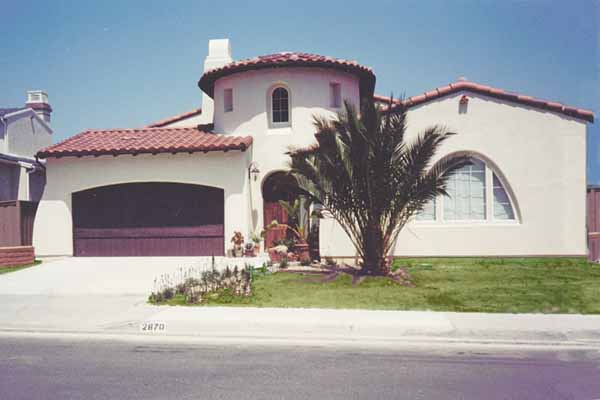ZERO LOT LINE
Zero Lot Line Housing: Redefining Space and Community in Real Estate
Introduction:
Defining Zero Lot Line Housing:
Zero Lot Line housing is a distinctive form of cluster housing development where individual dwelling units are placed on separately platted lots. The defining feature of this concept is that the structures are situated in such a way that one or more sides of each dwelling unit is built directly on or very close to the property line. This design optimizes land use, creating a more compact and efficient layout for residential communities.
Key Characteristics of Zero Lot Line Housing:
Maximized Land Utilization:
The primary objective of Zero Lot Line housing is to make efficient use of available land. By placing structures closer to property lines, developers can maximize the number of dwellings within a given area.
Individual Plots, Shared Walls:
Each dwelling unit in a Zero Lot Line development is placed on its own individually platted lot. While units may share one or more walls, they are considered separate entities with distinct ownership.
Variety in Attachment:
Zero Lot Line housing may involve attached units, such as townhouses or row houses, but it does not strictly require units to be connected. Detached units can also be part of a Zero Lot Line development, emphasizing flexibility in design.
Outdoor Space Optimization:
With the reduced setback requirements, Zero Lot Line housing often leads to smaller individual yards or outdoor spaces. However, developers may incorporate communal green spaces or amenities to compensate for the limited private outdoor areas.
Advantages of Zero Lot Line Housing:
Land Efficiency and Affordability:
Zero Lot Line developments make efficient use of land, allowing for higher residential density. This can contribute to more affordable housing options, particularly in areas with high land costs.
Community Interaction:
The proximity of units and shared walls in Zero Lot Line housing fosters a sense of community. Residents may find it easier to interact with neighbors, creating a close-knit living environment.
Reduced Maintenance:
With smaller individual lots and shared walls, residents may benefit from reduced exterior maintenance responsibilities. This can be appealing to those seeking a more low-maintenance lifestyle.
Urban Infill Opportunities:
Zero Lot Line housing is well-suited for urban infill projects, allowing developers to maximize the use of available space in established neighborhoods.
Urban Infill Opportunities:
Zero Lot Line housing is well-suited for urban infill projects, allowing developers to maximize the use of available space in established neighborhoods.
Considerations for Homebuyers and Developers:
Privacy Concerns:
Potential homebuyers should consider the proximity of units and the impact on privacy. While shared walls promote community, it's essential to strike a balance that aligns with individual preferences.
Architectural Variety:
Developers have the opportunity to create architectural diversity within Zero Lot Line developments, offering a mix of attached and detached units to cater to different preferences.
Community Planning and Amenities:
Thoughtful community planning, including communal spaces and amenities, can enhance the overall living experience in Zero Lot Line developments.
Conclusion:
Zero Lot Line housing represents a bold departure from traditional land use practices, offering a creative solution to the challenges of urban development and housing affordability. As the real estate industry continues to innovate, Zero Lot Line housing stands as a testament to the adaptability and versatility required to meet the evolving needs of homeowners and communities. Whether attached or detached, these developments redefine the boundaries of space and community, creating a blueprint for a more efficient and interconnected future in residential living.
MORE REAL ESTATE TERMS
A, B, C, D, E, F, G, H, I, J, K, L, M, N, O, P, Q, R, S, T, U, V, W, X, Y, Z
Featured New Home

Featured Mortgage Brokers
- AMERICAN BANK, ROCKVILLE, MD
9201 CORPORATE BLVD STE 130
ROCKVILLE, MD 20850 - ADVISORS MORTGAGE GROUP LLC, TURNERSVILLE, NJ
4991 BLACK HORSE PIKE
TURNERSVILLE, NJ 8012 - CSTONE MORTGAGE INC, SAN DIEGO, CA
4545 MURPHY CANYON RD STE 213
SAN DIEGO, CA 92123 - AMERICAN FINANCIAL NETWORK INC, MURRIETA, CA
24910 WASHINGTON AVE
MURRIETA, CA 92562 - PRIMARY RESIDENTIAL MORTGAGE INC, SAN FRANCISCO, CA
1746 18TH ST
SAN FRANCISCO, CA 94107